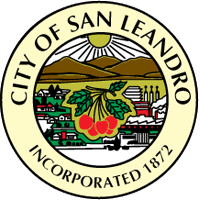Economic Growth in the East Bay is Expected to Remain Strong in 2017
At the East Bay Economic Development Alliance’s spring membership meeting on May 11, Dr. Christopher Thornberg of Beacon Economics presented his annual economic outlook for the East Bay. The report found that the East Bay economy had a strong 2016, and is expected to continue on a stable course throughout 2017 and 2018. With a high quality of life, relatively affordable real estate, and access to jobs, the East Bay economy experienced accelerated growth compared to 2015. Building on the gains achieved in 2016, economic growth in the East Bay is expected to remain strong in 2017.
Key points from the presentation included:
Employment: The East Bay region has transformed into a higher-skilled labor market more quickly than the rest of the state, while losing fewer of its mid-skilled jobs. Employment growth in the East Bay from December 2015 to December 2016 went from an estimated 2.7% to 3.1% (21,200 jobs), as compared 2.2% growth in the nation. The East Bay’s unemployment rate was 4.0% in February 2017, compared to 5.0% in the state overall. With more affordable commercial real estate and an increasing number of high-skilled workers living in the East Bay, more and more tech companies will be bringing jobs to the area.
Population: The East Bay has continued to lead Bay Area population growth over the last year. From 2015 to 2016, its population grew by 1.1%, in absolute terms the East Bay added 31,045 individuals in the last year, a larger gain than San Francisco. From 2006 to 2016, the East Bay’s population grew by 11.8%, an increase of nearly 290,000 people. The Bay Area’s booming economy has attracted many individuals to the region, which has led to a tight housing market and caused a significant increase in the number of Bay Area residents choosing to love in the more affordable East Bay region. From 2010 to 2015, net migration from San Francisco, San Mateo and Santa Clara counties to the East Bay was nearly 41,200.
Relative Affordability: The East Bay’s relative affordability, particularly as compared to San Francisco and the South Bay, is one of the most important factors contributing to the area’s recent economic success. Residents move to the area for more affordable housing and improved quality of life. Businesses are attracted to the area as an affordable place to expand or relocate and startups want to take advantage of “local synergies.”
Housing: Thornberg emphasized that more housing, for all income levels, is needed to address the current housing crisis, which is based on insufficient new housing being constructed. Even though permits for single-family housing issued in the East Bay grew 14.8% to 3,890 units in 2016, the undersupply of housing in the area continues to rapidly drive up prices. Beacon Economics predicts that price appreciation will increase through the third quarter of 2017, with year-over-year growth peaking at 11.9% as the housing market strains under persistently low inventories. However, the East Bay is still ahead in housing products as approximately 15,500 housing units were permitted for construction since the first quarter of 2015, compared to 11,253 units in San Francisco and 11,492 in the South Bay.







Leave a Reply